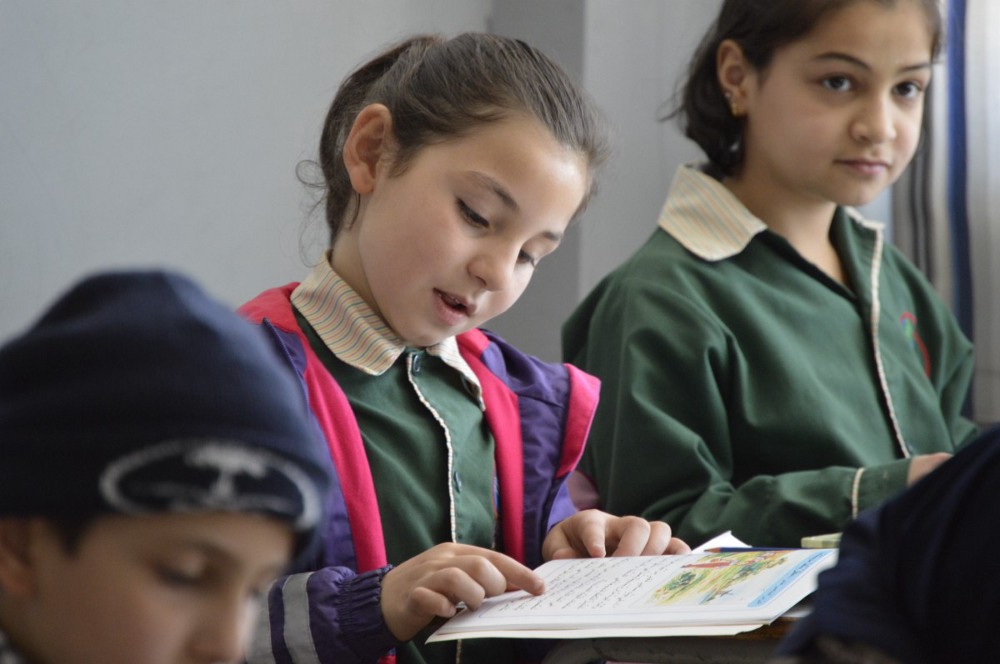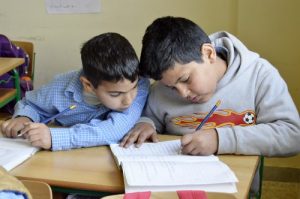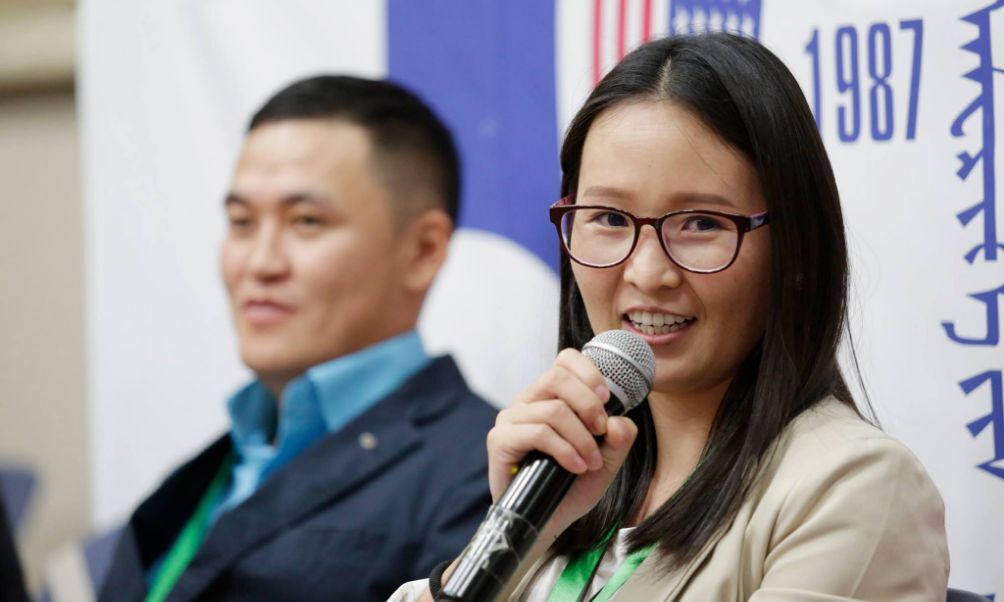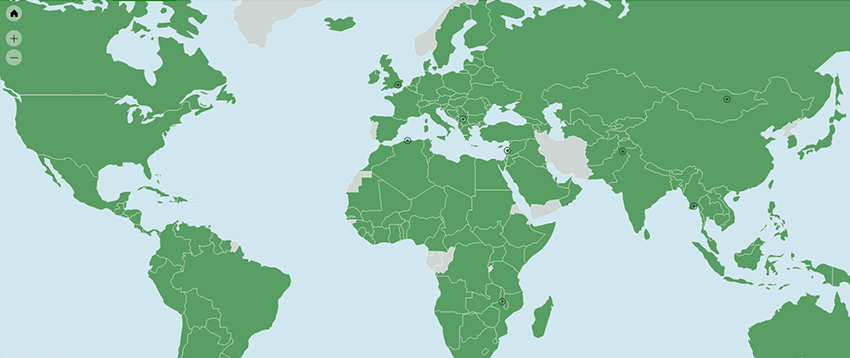-
What We Do
- WHERE WE WORK
-
About Us
 Welcome Message from Carol Jenkins
Welcome Message from Carol JenkinsFor more than 90 years, World Learning has equipped individuals and institutions to address the world’s most pressing problems. We believe that, working together with our partners, we can change this world for the better.
On my travels, I’ve had the opportunity to meet with many of those who have joined us in this mission. In Baghdad, we’ve trained more than 2,300 Iraqi youth who are already giving back at home. In London, our partners in the TAAP Initiative strongly believe that we are all responsible to practice inclusion. And in Vermont, our Experiment in International Living and School for International Training participants prove every day that they have the tools and the determination to change the world.
Please join us in our pursuit of a more peaceful and just world.
- Get Involved
Media Center > Story
How a New Tool Could Help Children Everywhere Learn to Read
July 12, 2019

All children have the right to learn how to read — no matter what language they speak or where they live.
But, too often, the resources that help kids develop reading skills aren’t available to everyone. The majority of the research on literacy best practices focuses only on alphabetic languages rather than logographic systems like Chinese. Meanwhile, many early grade reading teachers work with students who speak a different language at home than at school — and often don’t have access to training in evidence-based practices to help them understand how learning to read changes for those students.
In March, World Learning’s global education team sought to address those gaps with the launch of Teaching Struggling Readers Around the World, a free massive online open course (also known as a MOOC) created in partnership with The Chinese University of Hong Kong.
The five-week, self-paced course explored the fundamentals of learning to read from a multilingual perspective and shared teaching techniques that can be adapted to any language or cultural context. Rooted in research from around the world, the course drew on World Learning’s expertise in online teacher training as well as its global experience in helping kids learn to read through USAID-funded projects in Lebanon (Quality Instruction Towards Access and Basic Education Improvement) and Pakistan’s Gilgit-Baltistan and Azad Jammu Kashmir territories (Pakistan Reading Project).
“We’re not aware of another set of materials that’s so specifically going out of its way to show how learning to read works in different languages and how to adapt materials to those contexts,” says World Learning Senior Education Specialist Kara McBride. “That is what made it unique.”

Improving global literacy also requires a global community. Course designers — led by Chinese University of Hong Kong professor Catherine McBride, whose research on children’s literacy developmentand overcoming learning difficulties informed the curriculum — selected the MOOC format to reach a broader swath of teachers than a typical in-person training. They also opened the course to all interested community members, including caretakers and school administrators, to ensure that teachers and children alike have the support they need while learning new reading techniques.
“We want people along the whole value chain to understand what’s really important,” McBride says.
The course was a clear success.
Teaching Struggling Readers Around the World attracted more than 7,500 participants from 99 countries, including the United States, India, Oman, Latvia, Barbados, and the Philippines. It also attracted participants from Pakistan and Lebanon, where World Learning is currently implementing other global education projects. And nearly 40 percent of participants completed the course, which McBride explains is a rare feat among MOOCs, where completion rates tend to hover between 5 and 15 percent. “Forty percent is amazing,” she says.

Moreover, participants came away from the course better equipped to help children learn how to read. In a post-program survey, 99.8 percent of participants agreed the course was a good resource to learn about different reading skills that help identify learners’ strengths and weaknesses, while 99.5 percent of them said the course showed them fun and engaging ways to help children practice reading. Another 99.5 percent described the course as a good resource for teachers, parents, and educators alike.
“As a parent and educator, it helps me know where to start and deal with the reading problem strategically,” says Rialita A. Villarena, a participant from the Philippines. “The course provided me much needed support to grow professionally and be able to give more to my learners. To determine the problem as to where they are rooted is imperative in knowing the appropriate approaches and strategies to use. Our learners learn best in different ways and different styles.”
What set this MOOC apart from other online learning opportunities? For many participants, it was all about the accessible approach to learning. Not only did the course include short, engaging videos, but survey respondents also noted that course materials were written in a digestible way. It also offered practical tips that teachers could immediately apply in their classrooms and activities that parents could apply at home.
But another factor may have been the most important of all. “The research about what keeps people in an online course says that it mostly has to do with some kind of sense of community,” McBride explains.

To cultivate that community, the course designers included discussion boards in every learning module to encourage participants to share ideas with one another as well as with instructors. “We went out of our way to have world-class reading expert facilitators helping the discussion forums along and keeping it interesting and informative,” McBride says.
For participants like Natalie Burnett of Australia, these connections further underscored the multilingual approach to literacy. “Having a forum where people from the around the world were participating in gave me an insight into readers around the world — it was real perspectives, from real people from around the world,” she says.
Though the course has now ended, World Learning expects to offer similar courses again in the future. McBride also argues that its success proves the viability of the MOOC platform — and World Learning’s adaptable, multilingual approach — as a means to ensure that all children have the opportunity to learn how to read.
Learn more about how World Learning is working to ensure everyone has access to a high-quality education through cutting-edge global education programming.





